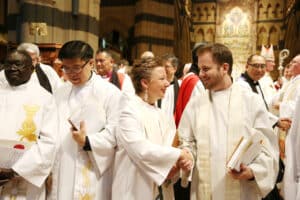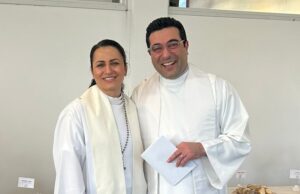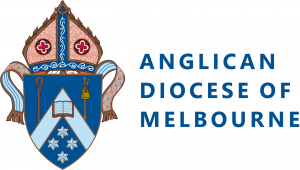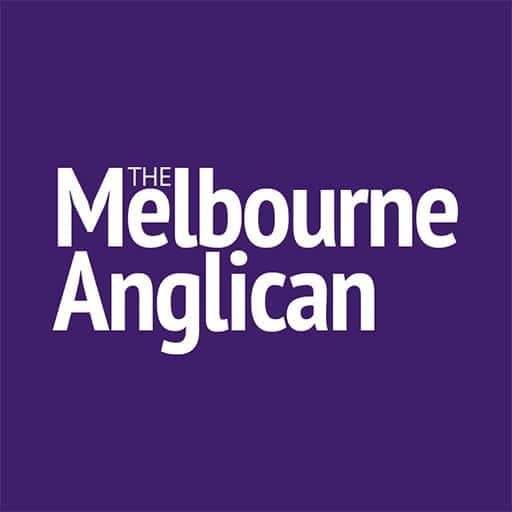
By Muriel Porter
12 January 2022
As the diocese’s archbishop election process is reviewed, Muriel Porter is calling for a return to the system of decades past: an electoral board. It’s not just that the elections have failed in their original purpose, writes Dr Porter, but new communication technology has brought new pitfalls.
An electoral board election was the method this diocese used to elect archbishops for more than a century. In the 1980s the process was changed to synodical election.
The Archbishop Election Act passed in 1988 provided for an 18-member, synod-elected Board of Nominators to bring a selection of candidates to an election meeting of synod members.
That act that is currently the subject of review.
In 2021 synod vigorously debated review recommendations about the act, brought by a small working group. A new, larger working group is now carrying that process further, with a view to bringing new legislation to the 2022 synod.
What was not on the table in last year’s review was the possibility of abandoning direct synodical election for a return to the earlier process: election by a synod-elected Board of Electors.
I hope that the newly-constituted working party will at least consider this possibility, for which I am seriously advocating.
I served on the Board of Nominators for each of the Archbishopric elections conducted under the 1988 Act since it came into being: the elections of archbishops Keith Rayner in 1990, Peter Watson in 2000 and Philip Freier in 2006. So, I write with in-depth experience of how the current process works – and doesn’t work – and memories of some behind-the-scenes events that still trouble me.
When the 1988 Act was passed, a synod election seemed like a good idea, that hopefully would ensure an archbishop had strong majority support across the diocese.
From all accounts, the Board of Electors that elected David Penman as archbishop in 1984 had been conflicted by churchmanship and personality politics. The board struggle, aspects of which had leaked widely into the diocese, suggested that the election outcome was not strongly supported.
Whether this was actually true is hard to ascertain at this distance. But it seems Archbishop Penman felt it keenly enough to want to ensure that his successors could be assured of much stronger majority support. Election by the whole synod would surely overcome any doubts.
Frankly, I don’t believe it has. The last three elections have been every bit as conflicted as the last board election, and the struggle to achieve an outcome has been just as taxing and just as divisive. Two of those elections have endured a failed synod election session, with the Board of Nominators required to return to work to provide a fresh slate of names for a new session.
I do not believe that the three archbishops elected by synod process have enjoyed a significantly higher level of initial support than David Penman did. Any doubts over their candidature, or that of any of the other candidates brought to those synod meetings, were in fact more widely known and discussed, given there were many hundreds of people canvassing their names. I also believe these elections have been more divisive for the diocese than election by an electoral board would have been.
And there is now another factor that was not on the radar at the time Melbourne changed its process: modern communications. In 1988, the internet was still some years away from public access. Email and mobile phones were rare, and social media didn’t exist. The biggest danger confronting a synod election was confidentiality: ensuring that hundreds of synod members did not reveal what was happening behind the closed doors in an election process lasting several days.
In the era of mass, instant, unbridled communication, a synod election is now too fraught to be safe for anyone. Direct messaging apps, text messages, social media and the rest can too easily corrupt the process. That is a danger for any high-stakes synod debate of course, but a synod archbishop election by its very nature takes no prisoners. Once an archbishop is elected, there is no way a flawed or damaged process can be redeemed by recommitting the decision.
Those who were part of the last election will remember that email mischief circulated to one section of the Synod membership at the 11th hour drastically changed the votes for one candidate. It was impossible for the information distributed in that email to be checked or challenged before the crucial ballot.
That was in 2006. Think how much more intrusive communication methods have become since then. That is, I believe, a crucial reason why such an important decision can no longer be safely committed to a large, unwieldy, time-constrained process.
Furthermore, synodical elections mean some high-quality potential candidates will not allow their names to be considered by a large semi-public meeting, where there is no opportunity for redress if their reputation is challenged.
Synods also have very limited opportunity to assess candidates. We tried our best with video interviews and presentations in 2006 but these were not really satisfactory, leaving synod members at the mercy of second-hand information. On more than one occasion, as Chair of the Board, I had to publicly correct misunderstandings, and challenge unkind and ignorant comments made during meetings.
The election synod voting process is necessarily complex. In a time-poor, often highly emotional context, many synod members can feel confused and conflicted. They are ready fodder for manipulation by astute operators.
In contrast, a Board of Electors, has the advantage of time, space and privacy. These provide the opportunity for members to get to know each other and hopefully learn to trust each other. It avoids a rushed decision, and mean all information can be checked and challenged. And, candidates can be properly and fairly assessed, both through confidential information that could not be made available to a large semi-public forum, and in face-to-face in-depth interviews.
A Board of Electors is of course not perfect, no election process is. A board can seem to be not as democratic as a synod election, and if not judiciously managed, can also be manipulated and create division. But synods themselves are not democratic, because in a diocese the size of Melbourne, they constitute a small proportion of the whole. Synod members are representatives of the diocese, and a Board of Electors is elected by the synod, so represents the representatives. If it is comprised of a significant number – I would advocate strongly for a board of at least 18 members – it can be genuinely representative of a diocese as diverse as Melbourne.
I sincerely hope the new review group gives serious attention to the possibility of returning the election of archbishops to a Board of Electors.







